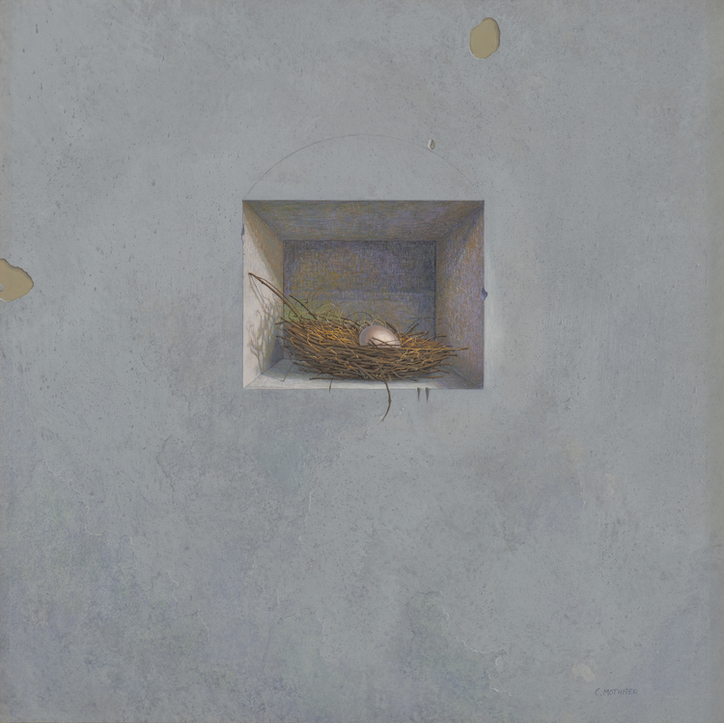Exhibit

Curatorial Conversations: Amanda Donnan with D. Graham Burnett and Joanna Fiduccia
Parafiction: What Contemporary Art Can Teach Us About Post-Truth Ways of Knowing
Related Artwork
Marcel Duchamp: The Box in a Valise (Boîte-en-valise)
- MOMA Collection
- MassArt Library Artist Book - Marcel Duchamp or Rrose Selavy: Museum in a box facsimile

ESTAR(SER) Bio
ESTAR(SER) — The Esthetical Society for Transcendental and Applied Realization (now incorporating the Society for Esthetic Realizers) — is a private, dedicated body of amateurs, scholars, and interested parties who concern themselves with the historicity of The Order of the Third Bird. This community of researchers works to sift evidences of Bird-like attentional practices in the historical record, and to present those evidences to critical readers. In this project ESTAR(SER) is fortunate to be in possession of a vast (possibly infinite) body of source materials — known as “The W-Cache” — which appears to have been assembled by an aspiring historian of the Order seeking to write a comprehensive history of the Birds. He or she did not succeed, but bequeathed to the Society a valuable and diverse archive. The academicians of ESTAR(SER) have made it their business, over the years, to publish critical editions of these primary sources, materials that see print in The Proceedings of ESTAR(SER).
D. Graham Burnett Bio
D. Graham Burnett works at the intersection of historical inquiry and artistic practice. He makes texts (and occasions) using experiential approaches to archival material, pedagogical modes, and hermeneutic activities traditionally associated with the research humanities. Based in New York, Burnett trained in the History and Philosophy of Science at Cambridge University and teaches at Princeton. He edits a series in speculative historiography, “Conjectures,” for The Public Domain Review (UK), and is the author of a number of books, including Masters of All They Surveyed (Chicago: University of Chicago Press, 2001); Trying Leviathan (Princeton: Princeton University Press, 2007); The Sounding of the Whale (2012); and Twelve Theses on Attention (New York: FoA/PUP, 2022), co-authored and co-edited with Stevie Knauss and the Friends of Attention, with whom he often collaborates. Burnett’s essays, pseudonymities, and metafictions have appeared in: Cabinet (where he is an editor), October, Parkett, Texte zur Kunst, TANK, Geist, and elsewhere, including the catalogue of the 55th Venice Biennial.
Joanna Fiduccia Bio
Joanna Fiduccia is an art historian, art critic, and assistant professor in the Department of the History of Art at Yale University. She is the author of Figures of Crisis: Alberto Giacometti and the Myths of Nationalism (New Haven: Yale University Press, forthcoming), as well as scholarship and criticism published in October, Art History, Parkett, Spike Art Quarterly, East of Borneo, and Artforum. A founding co-editor of the journal apricota and a collaborator with the Friends of Attention, her writing has also appeared in catalogues and essay collections including Maria Martins: Tropical Fictions (Sao Paolo: Museu de Arte de São Paulo, 2021), In Search of the Third Bird (London: Strange Attractor, 2021), and Alberto Giacometti: In Search of Lost Works (Paris: Editions Fage, 2020).
Carrie Lambert-Beatty Bio
Carrie Lambert-Beatty is Professor in the Department of History of Art and Architecture and the Department of Visual and Environmental Studies at Harvard University. Her research and teaching stress the connections that make seemingly obscure contemporary art a source for new thinking (and feeling) about pressing social problems.
An art historian with a focus on post-modern and contemporary art, she is currently at work on an art history of the post-truth turn. Developing ideas from her essay “Make-Believe: Parafiction and Plausibility," this project explores what she termed parafiction--the presentation of fiction as fact—as a prevalent mode of contemporary art. During the extended crises in knowledge spurred by globalization, the internet, post-colonial reckoning, and climate change, artists repurposed the operations of performance, installation, and conceptual art to generate a type of contemporary trompe-l'oeil; an art of epistemic adventure that presses viewers--often uncomfortably--into new values, habits, and competencies of knowing. Belonging neither to the classical ideal of rationality nor the post-truth model of partisanship-based belief, these are components of a progressive, contemporary epistemic set: curiosity, reflexivity, humility, and the ability to be surprised.
Lambert-Beatty came to the topic of parafiction through research on the potential and limits of political art in contemporary practice, which she explored in essays on hybrids of art and activism, such as Women on Waves and The Yes Men, and in the work of artists such as Tania Bruguera and Allora + Calzadilla. Her essay on recuperation--both neurological and ideological--accompanied the latter's representation of the United States at the 2011 Venice Biennial. Her 2008 book Being Watched: Yvonne Rainer and the 1960s (MIT Press) treated aesthetic issues such as minimalism, dance, documentation, and the problem of politics in the art of a signal member of the American avant-garde, bringing performance theory and dance history to the question of how artists responded, often at unconscious levels, to the burgeoning media culture of the 1960s. Lambert-Beatty’s writing has also appeared in collections such as the Blackwell-Wiley volume Contemporary Art 1989 to the Present, exhibition catalogs including Dance/Draw and A Minimal Future? Art as Object 1958-1968, and the journals Artforum, Art Journal, Art Papers, and Signs, as well as October, of which she is an editor.
Before taking her current position at Harvard, Lambert-Beatty taught art history at Northwestern University. She studied American and Modern/Contemporary art history at Stanford University, receiving her Ph.D. in 2002, and was a Critical Studies Fellow in the Whitney Museum of American Art's Independent Study Program in 1997-98. Fellowships from the Luce/ACLS and Dedaelus Foundations, the Getty and Radcliffe Research Institutes, and the Du Bois Institute at the Hutchins Center for African and African-American Studies have supported her research.
Reviews
-
Bird LoreBy Agnieszka Gratza, Oct. 2023.
-
Fact, Fiction, Avis TertiaBy Josefina Massot, July 17, 2022.
-
In Search of The Third Bird: Exemplary Essays from The Proceedings of ESTAR(SER) 2001–2021By Jerónimo Duarte-Riascos, Nov. 2022.
-
In Search of the Third BirdBy Mike Lynch, June 2022.







